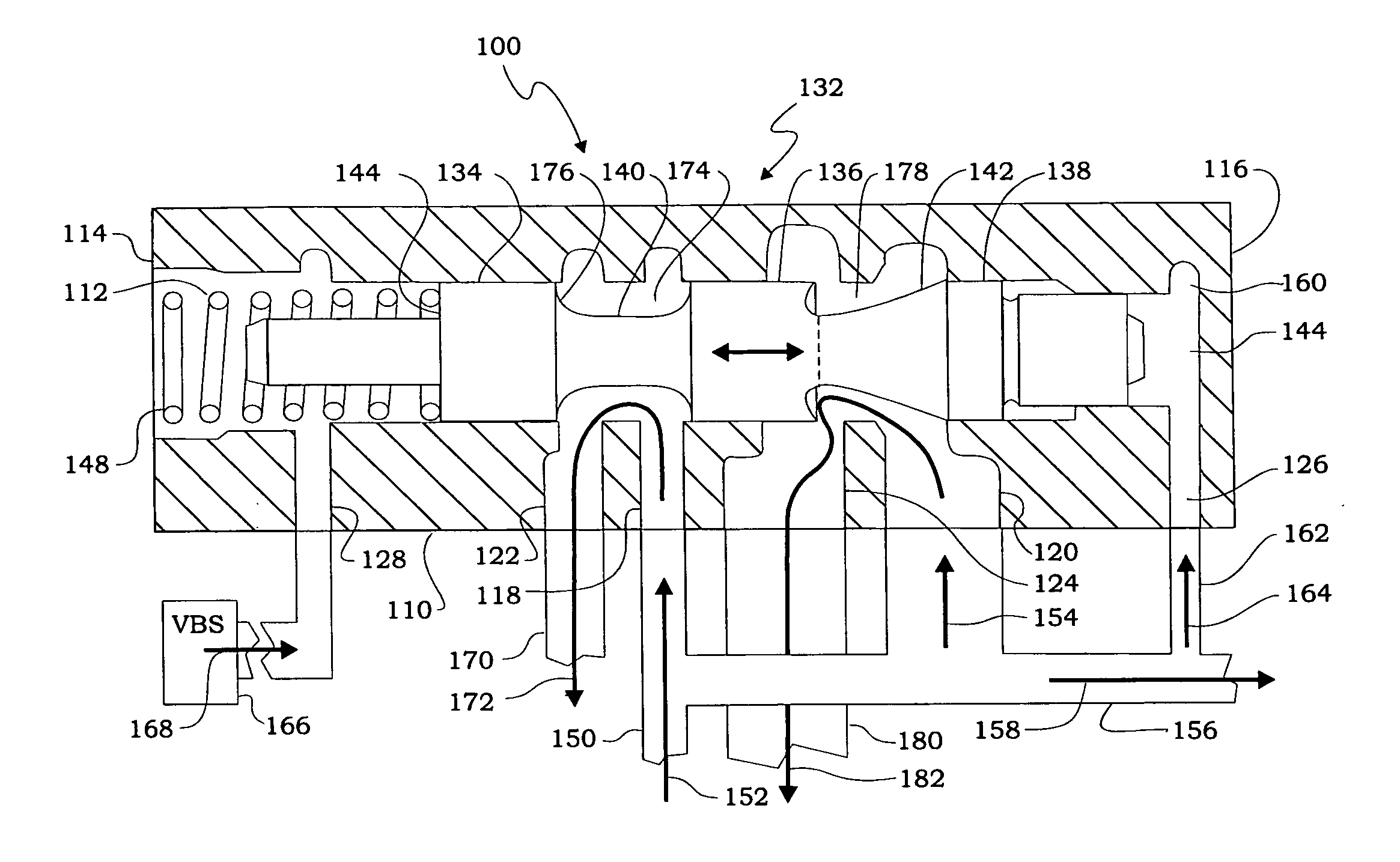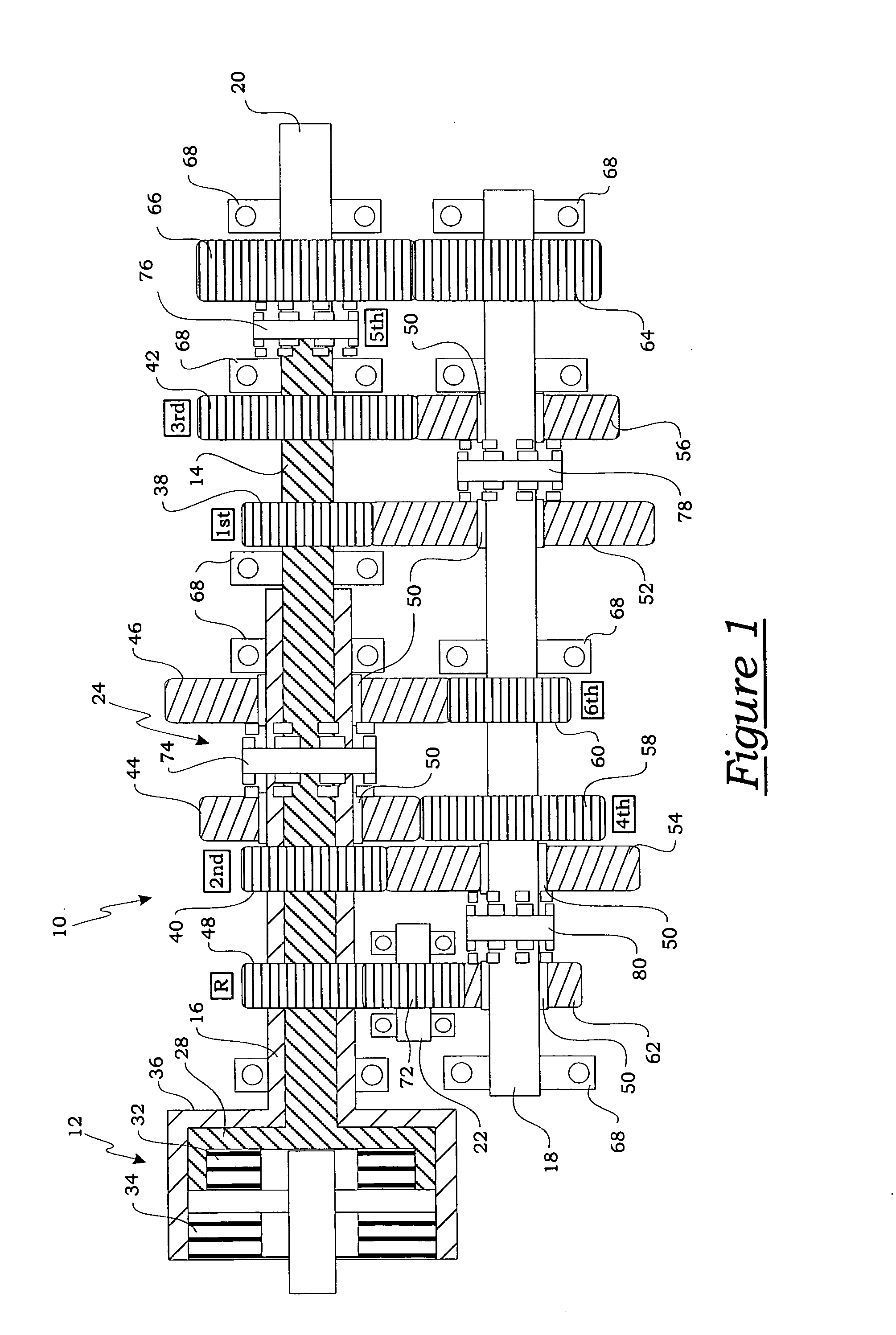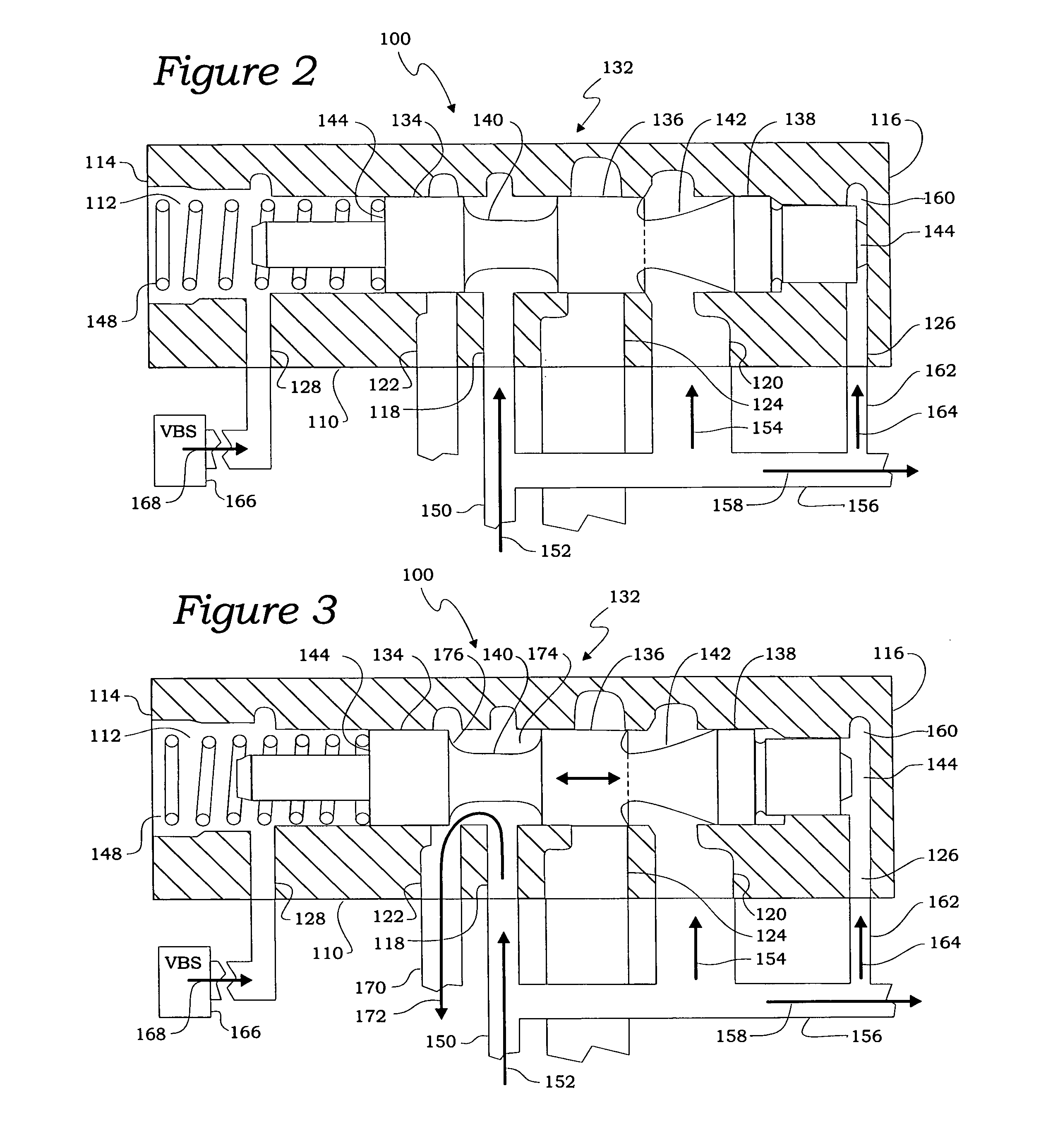This results in losses in efficiency.
Although conventional automatic transmissions avoid an interruption in the drive connection during gear shifting, they suffer from the
disadvantage of reduced efficiency because of the need for hydrokinetic devices, such as torque
converters, interposed between the output of the engine and the input of the transmission for transferring
kinetic energy therebetween.
In addition, automatic transmissions are typically more mechanically complex and therefore more expensive than manual transmissions.
Fluid couplings have inherent slip.
The power required to drive the pump and pressurize the fluid introduces additional parasitic losses of efficiency in the automatic transmission.
However, even with the inherent improvements of these newer automated transmissions, they still have an operative power interruption in the drive connection between the input shaft and the output shaft during sequential gear shifting.
Power interrupted shifting results in a distinct shift feel that is generally associated with manual transmissions and may considered undesirable in certain operating environments.
While these new types of automatic transmissions have overcome several drawbacks associated with conventional transmissions, it has been found that controlling and regulating these automatically actuated transmissions to achieve the desired vehicle occupant comfort goals in an efficient and cost effective manner is a complicated matter.
Since hydraulically actuated devices respond in a predetermined and a precise manner for the given pressure supplied to actuate them, inaccurate control of the hydraulic supply pressure causes inaccurate operation and control of a AMT or DCT transmission.
Up to this point, establishing and maintaining a stable hydraulic supply pressure in these newer types of automatic transmissions has proven problematic.
However, the conventional regulation approaches fail to properly account for various flow effects of the
hydraulic fluid within the
hydraulic circuit and do not provide the precise and stable hydraulic supply pressure that is necessary to ensure accurate control over the AMT or DCT transmission.
As the hydraulic fluid moves through the
regulator the inherent flow forces act against the physical surfaces of the valve member, the applied force can physically effect the position of the valve member in the valve body causing it to move and generate
instability in the pressure
regulator.
For example, an increase in fluid flow from the pump may act upon the valve member surfaces of the pressure regulator forcing it open further, or an increase in pump suction may cause the regulator to move in an uncontrolled manner.
The forced movement of the pressure regulator valve member by the flow forces causes
instability in the line pressure and causes further variations in the flow as the regulator tries to correct.
Thus, while the current pressure regulators have generally worked for the intended purpose of gross regulation of line pressure to a relative range, they are still susceptible to flow forces fluctuations causing inaccurate
hydraulic control of the transmission.
A meter-in configuration provides
good control over the
steady state flow but is generally unstable in regulating transient flow force.
A meter-out configuration provides
good control during transient flow force conditions, but offers less stable control of the
steady state flow force.
The lack of valve stability in either of these pressure regulator configurations introduces line pressure fluctuations and subsequent inaccurate actuation and control of the dual
clutch transmission.
The inefficiencies and inaccuracies in
hydraulic control of the dual
clutch transmission that are attributable to the pressure regulator are distinct and produce quantifiable losses of vehicle output power and fuel economy.
However, these attempts have been largely unsuccessful and have only made compensations for transient flow force effects at the expense of introducing instabilities in
steady state flow force control.
Thus, the conventional approaches employed with
hydraulic pressure regulators in an AMT or DCT transmission remain inefficient and susceptible to fluctuations and inaccurate control of the line pressure causing inaccurate
hydraulic control of the dual clutch transmission.
 Login to View More
Login to View More  Login to View More
Login to View More 


